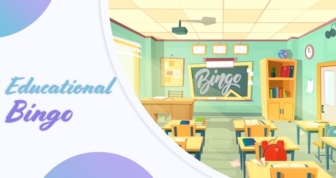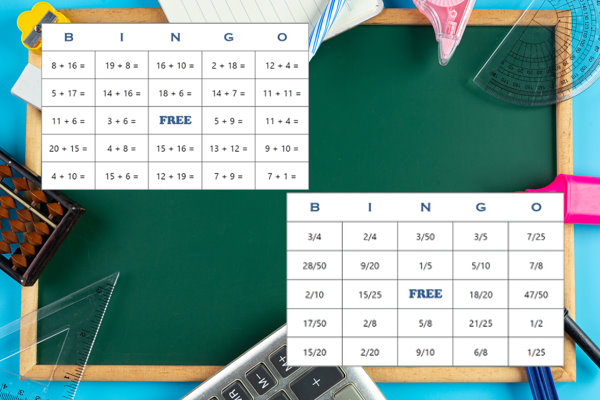
While education may not be the first thing that springs to mind when you think of online bingo, it can actually be used as a highly effective educational tool. If your lessons become monotonous and you need something to shake things up, you can ensure that your students have fun in the classroom using the basic game of bingo, no matter what you are teaching. Here we will take you through a few of the ways that bingo can enhance education.
One of the most basic and popular ways to use bingo in education is to create bingo cards to teach students vocabulary. It doesn’t matter what the subject is, literature, science, history, art or anything else. Students can play bingo while learning new vocabulary, which will make the lessons more interactive and enjoyable. It is also likely to be a far more effective way of learning than having the students simply reading a list of words or listening to them read out.
Furthermore, it will introduce an element of competition into the lesson, which can be highly motivational. While this may sound like an almost childish way of learning, it can be surprisingly effective with children of any age.
It is possible to create bingo games that will help to review key concepts in a subject. For example, in a maths lesson, the teacher can create bingo cards that have maths problems or formulae. The teacher then calls out the problems to be solved and the students have to find the solutions on their bingo cards. Just as with learning vocabulary, this will make the lessons more engaging, create competition, and make the learning process more active. The concept is easy to adapt to other subjects. Geography teachers could use bingo educational cards with capital cities, literature teachers could use cards with thematic elements of novels, and so on.

Bingo can be an excellent way to help students improve their critical thinking skills. For instance, in a history lesson, bingo cards with historical events could be used. The teacher would call out the date and location of the event and then students would mark them on their bingo cards. This process requires students to engage with the information provided and make connections between events.
For more advanced students, the game can be made harder. The teacher could provide just part of the information, such as a date, and require students to fill in the blanks. This way, critical thinking and problem-solving skills are being exercised.
While it is obvious how bingo can be used to encourage individual competition amongst students, it can also be used to help build teamwork. For instance, a teacher could split the class into teams and have each team create bingo cards using vocabulary or concepts. The various teams can then compete against each other and some kind of reward could be offered. Not only will this help to promote teamwork, but it will also encourage the students to work together reviewing material and help each other understand it properly.
One of the biggest advantages of using bingo as an educational tool is how adaptable it is. Teachers can create games and cards that are tailored to the specific needs of their students and classes. For instance, if there are students with special needs, then it is possible to create cards with larger fonts or with pictures instead of words to make the game accessible. Similarly, it is possible to create the cards in any language.

There truly are countless ways that bingo can be incorporated into the classroom and a quick search online will reveal plenty of readily available material. Here are a few more ideas for you to consider:
In short, bingo can be a truly enjoyable educational tool no matter the subject being taught or the age of the students. It can enhance the learning experience and increase engagement in the classroom and give the students something to look forward to. The games are low-tech, cheap, and accessible, it is easy to implement, and can be adapted to the needs of almost any class. If you are a teacher, then why not consider including bingo in your next lesson plan?